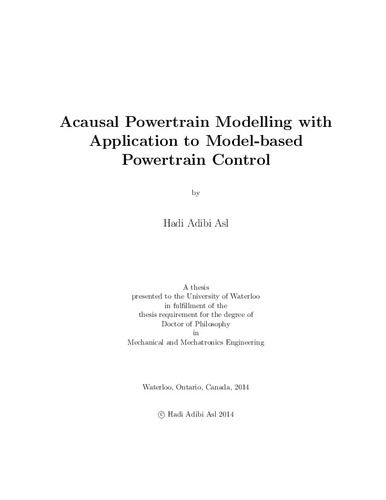| dc.description.abstract | The automotive industry has long been searching for efficient ways to improve vehicle performance such as drivability, fuel consumption, and emissions. Researchers in the automotive industry have tried to develop methods to improve fuel consumption and reduce the emission gases of a vehicle, while satisfying drivability and ride comfort issues. Today, by developing computer/software technologies, automotive manufacturers are moving more and more towards modelling a real component (prototype) in a software domain (virtual prototype). For instance, modelling the components of a vehicle's powertrain (driveline) in the software domain helps the designers to iterate the model for different operating conditions and scenarios to obtain better performance without any cost of making a real prototype.
The objective of this research is to develop and validate physics-based powertrain models with sufficient fidelity to be useful to the automotive industry for rapid prototyping. Developing a physics-based powertrain model that can accurately simulate real phenomenon in the powertrain components is of great importance. For instance, a high-fidelity simulation of the combustion phenomenon in the internal combustion (IC) engine with detailed physical and chemical reactions can be used as a virtual prototype to estimate physical prototype characteristics in a shorter time than it would take to build a physical prototype. Therefore, the powertrain design can be explored and validated virtually in the software domain to reduce the cost and time of product development.
The main focus of this thesis is on development of an internal combustion engine model, four-cylinder spark ignition engine, and a hydrodynamic torque converter model. Then, the models are integrated along with the rest of a powertrain's components (e.g. vehicle longitudinal dynamics model) through acausal connections, which represents a more feasible physics-based powertrain model for model-based control design. The powertrain model can be operated at almost all operating conditions (e.g. wide range of the engine speeds and loads), and is able to capture some transient behaviour of the powertrain as well as the steady state response. Moreover, the parametric formulation of each component in the proposed powertrain model makes the model more efficient to simulate different types of powertrain (e.g. for a passenger car or truck). | en |

